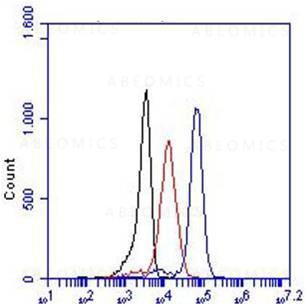Cookie-Einstellungen
Diese Website benutzt Cookies, die für den technischen Betrieb der Website erforderlich sind und stets gesetzt werden. Andere Cookies, die den Komfort bei Benutzung dieser Website erhöhen, der Direktwerbung dienen oder die Interaktion mit anderen Websites und sozialen Netzwerken vereinfachen sollen, werden nur mit Ihrer Zustimmung gesetzt.
Konfiguration
Technisch erforderlich
Diese Cookies sind für die Grundfunktionen des Shops notwendig.
"Alle Cookies ablehnen" Cookie
"Alle Cookies annehmen" Cookie
Ausgewählter Shop
CSRF-Token
Cookie-Einstellungen
FACT-Finder Tracking
Individuelle Preise
Kundenspezifisches Caching
Session
Währungswechsel
Komfortfunktionen
Diese Cookies werden genutzt um das Einkaufserlebnis noch ansprechender zu gestalten, beispielsweise für die Wiedererkennung des Besuchers.
Facebook-Seite in der rechten Blog - Sidebar anzeigen
Merkzettel
Statistik & Tracking
Endgeräteerkennung
Kauf- und Surfverhalten mit Google Tag Manager
Partnerprogramm

| Artikelnummer | Größe | Datenblatt | Manual | SDB | Lieferzeit | Menge | Preis |
|---|---|---|---|---|---|---|---|
| ABE-10-3516-100 | 100 µg | - |
3 - 11 Werktage* |
2.558,00 €
|
Bei Fragen nutzen Sie gerne unser Kontaktformular.
Bestellen Sie auch per E-Mail: info@biomol.com
Größere Menge gewünscht? Bulk-Anfrage
Bestellen Sie auch per E-Mail: info@biomol.com
Größere Menge gewünscht? Bulk-Anfrage
The monoclonal antibody 10-3516 recognizes the 116 kDa human Toll-like receptor 3 (TLR3, CD283).... mehr
Produktinformationen "Anti-human TLR3 (Clone: TLR3.7)"
The monoclonal antibody 10-3516 recognizes the 116 kDa human Toll-like receptor 3 (TLR3, CD283). Toll-like receptors (TLRs) are highly conserved from Drosophila to humans and share structural and functional similarities. TLRs constitute of a family of pattern recognition receptors (PRRs) that mediate cellular responses to a large variety of pathogens (viruses, bacteria, and parasites) by specific recognition of so-called 'pathogen-associated molecular patterns'. Activation of TLRs, a family of at least 11 different members that function either as homo- or heterodimers, leads to activation of NFkBdependent and IFN-regulatory factor-dependent signaling pathways. TLRs have a central role in innate immunity and are also required for the development of an adaptive immune response. TLRs are expressed by various cells of the immune system, such as macrophages and dendritic cells. TLRs are class I receptors, with a single Alpha-helix that spans the cell membrane. They recognize and respond to molecules derived from bacterial, viral and fungal pathogens, such as lipopolysaccharide (LPS) from the outer membrane of Gram negative bacteria, peptidoglycan fragments from bacterial cell walls and single-stranded and double-stranded RNA from viruses. Some forms of RNA and DNA from pathogens exhibit immutable features that distinguish them from nucleic acids of higher organisms. For example, dsRNA, is a common intermediate of viral replication and a potent indicator of infection. Toll-like receptor 3 (TLR3) recognizes viral double-stranded RNA and its synthetic analog polyriboinosinic:polyribocytidylic acid (poly(I:C)). TLR3 is normally located in acidic endosomes where its luminal ectodomain (ECD) encounters dsRNA and induces type I interferon (IFN), inflammatory cytokine/chemokine production and dendritic cell (DC) maturation via the adaptor protein TICAM-1 (also called TRIF). Based on the different subcellular localization of cytosolic RNA receptors and TLR3, these receptors seem to play distinct roles in anti-viral immune responses. Protein function: Key component of innate and adaptive immunity. TLRs (Toll-like receptors) control host immune response against pathogens through recognition of molecular patterns specific to microorganisms. TLR3 is a nucleotide-sensing TLR which is activated by double-stranded RNA, a sign of viral infection. Acts via the adapter TRIF/TICAM1, leading to NF-kappa-B activation, IRF3 nuclear translocation, cytokine secretion and the inflammatory response. [The UniProt Consortium]
| Schlagworte: | Anti-TLR3, Anti-CD283, Anti-Toll-like receptor 3, Monoclonal Antibody to human TLR3 (Clone : TLR3.7) |
| Hersteller: | Abeomics |
| Hersteller-Nr: | 10-3516 |
Eigenschaften
| Anwendung: | FC, FA, IP |
| Antikörper-Typ: | Monoclonal |
| Klon: | TLR3.7 |
| Konjugat: | No |
| Wirt: | Mouse |
| Spezies-Reaktivität: | human |
| Immunogen: | Human Flag-tagged TLR3 stably expressed by Ba/F3 cells |
| Format: | Purified |
Datenbank Information
| KEGG ID : | K05401 | Passende Produkte |
| UniProt ID : | O15455 | Passende Produkte |
| Gene ID | GeneID 7098 | Passende Produkte |
Handhabung & Sicherheit
| Lagerung: | +4°C |
| Versand: | +4°C (International: +4°C) |
Achtung
Nur für Forschungszwecke und Laboruntersuchungen: Nicht für die Anwendung im oder am Menschen!
Nur für Forschungszwecke und Laboruntersuchungen: Nicht für die Anwendung im oder am Menschen!
Hier folgen Informationen zur Produktreferenz.
mehr
Hier kriegen Sie ein Zertifikat
Loggen Sie sich ein oder registrieren Sie sich, um Analysenzertifikate anzufordern.
Bewertungen lesen, schreiben und diskutieren... mehr
Kundenbewertungen für "Anti-human TLR3 (Clone: TLR3.7)"
Bewertung schreiben
Loggen Sie sich ein oder registrieren Sie sich, um eine Produktbewertung abzugeben.
Zuletzt angesehen







